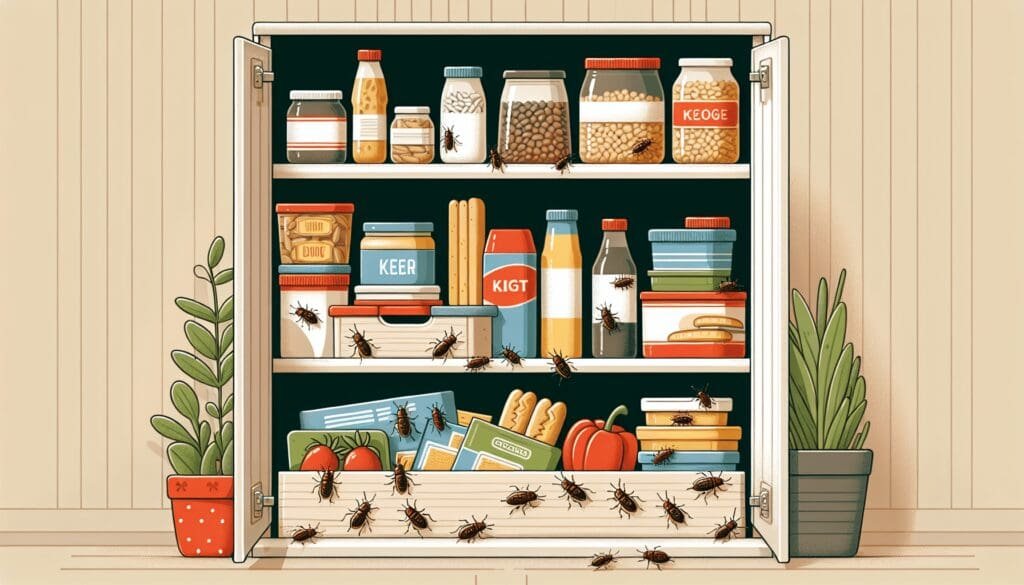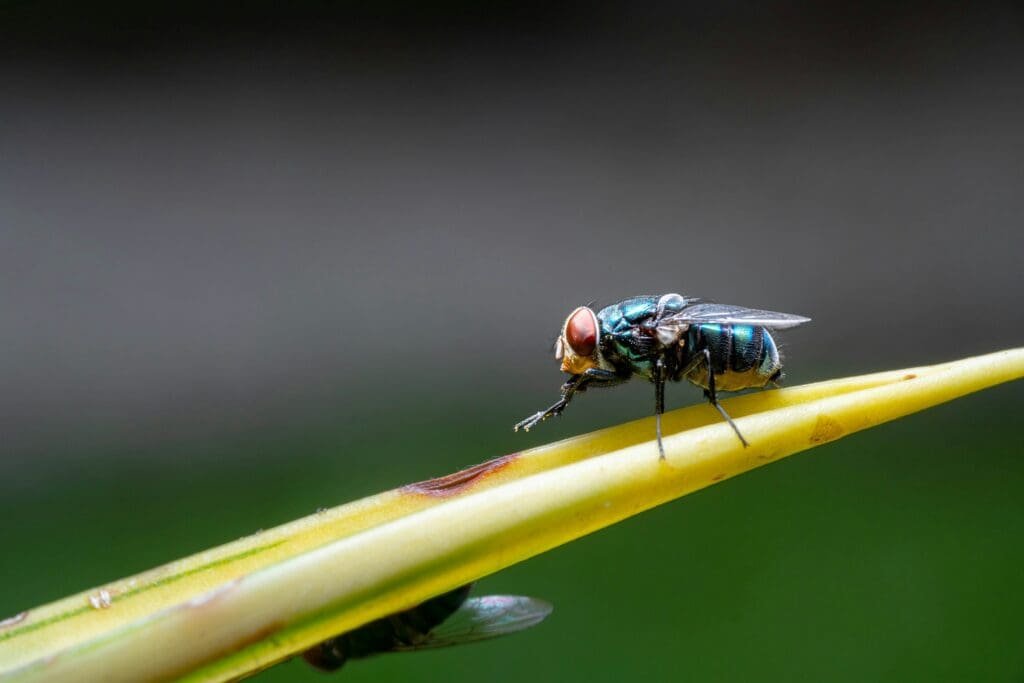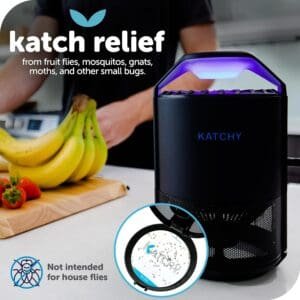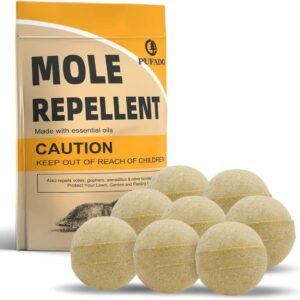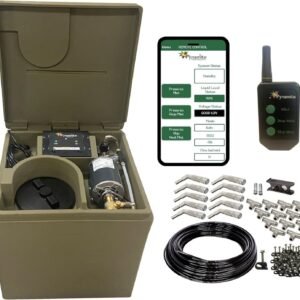Are you tired of dealing with pesky pantry pests invading your kitchen and contaminating your food? Look no further! In this informative article, you will discover effective methods and practical tips on how to successfully eliminate pantry pests from your home. From identifying the common culprits to implementing preventive measures, this guide will equip you with the knowledge and tools necessary to regain control over your pantry and protect your food from these unwanted intruders. Say goodbye to pantry pests and hello to a pest-free kitchen!
Identify the Pantry Pest
Observe the pest’s physical characteristics
When dealing with a pantry pest infestation, the first step is to identify the type of pest you are dealing with. Start by carefully observing the physical characteristics of the pest. Look out for the size, color, shape, and any distinguishing features it may have. Take note of whether it has wings, how many legs it has, and any patterns or markings on its body. This information will help you determine the exact type of pantry pest you are dealing with.
Research common pantry pests
After observing the physical characteristics of the pest, the next step is to conduct some research on common pantry pests. Familiarize yourself with the different types of pests that are commonly found in pantries, such as flour beetles, weevils, grain moths, and cockroaches. Learn about their habits, preferences, and typical signs of infestation. This knowledge will assist you in effectively dealing with the problem and preventing future infestations.
Inspect Your Pantry
Remove all items from the pantry
To thoroughly inspect your pantry for signs of infestation, it is essential to remove all items from the shelves. Take out each item, including canned goods, packaged foods, and spices. Place them on a clean surface to allow for a comprehensive inspection of both the items themselves and the pantry shelves.
Clean and disinfect the pantry
Once all the items have been removed, take the opportunity to thoroughly clean and disinfect your pantry. Use warm soapy water to clean the shelves, paying close attention to corners, cracks, and crevices where pests may hide. Afterward, disinfect the pantry with a mixture of water and vinegar or a mild bleach solution. This step will eliminate any lingering pests or eggs and create an environment that is less attractive to pests.
Check for signs of infestation
While inspecting your pantry, keep an eye out for signs of infestation. Look for chewed packaging, holes in food containers, droppings, webs, or larvae. Pay close attention to corners, cracks, and crevices where pests tend to hide. If you spot any signs of infestation, make a note of it as you will need to take appropriate action to eliminate the pests and prevent further damage.
Dispose of Infested Items
Throw away any infested items
If you discover any items in your pantry that are infested with pests, it is crucial to get rid of them immediately. Do not attempt to salvage them, as this could lead to further spread of the infestation. Dispose of the infested items in a sealed plastic bag or double-bagged to prevent any pests from escaping and causing further trouble.
Seal infested items in a plastic bag before disposing
When disposing of infested items, it is important to seal them in a plastic bag before placing them in the trash. This extra layer of protection will prevent pests from escaping and re-infesting your pantry or other areas of your home. Make sure to tie the bag securely and dispose of it in an outdoor trash bin to minimize the risk of pests returning.
Implement Preventive Measures
Use airtight containers
One of the most effective ways to prevent pantry pests is to store your food items in airtight containers. Pests are attracted to the scent of food, and they can easily access items stored in loosely sealed packaging. Investing in airtight containers will create a barrier and make it difficult for pests to infest your pantry. Ensure that all containers are properly sealed to eliminate any potential entry points.
Store food properly
Proper food storage is key to preventing pantry pest infestations. Make sure to store all pantry items in cool, dry areas away from direct sunlight. Avoid storing food on the floor or near walls, as pests can easily access them. Keep items off the ground and use elevated storage solutions, such as shelves or racks, to create a barrier between your food and pests.
Regularly check expiration dates
Regularly checking the expiration dates of your pantry items is essential in maintaining a pest-free pantry. Expired food is not only potentially harmful to consume but also attracts pests. Rotating your stock and using older items before newer purchases will reduce the risk of infestation. Additionally, remove any expired items from your pantry to create a clean and pest-resistant environment.
Keep pantry clean and organized
A clean and organized pantry is less appealing to pantry pests. Regularly clean the shelves, sweep or vacuum the pantry floor, and wipe down all surfaces to remove any crumbs or spills. Dispose of garbage promptly and maintain a clutter-free environment. By eliminating potential food sources and hiding spots, you will discourage pests from making your pantry their home.
Use bay leaves or herbal repellents
Some natural repellents, such as bay leaves or herbal sachets, can help deter pantry pests. Place a few bay leaves in your pantry or tuck herbal sachets among your food items. The strong aroma of these natural ingredients is disliked by many pantry pests, making them less likely to infest your pantry. Remember to replace these repellents periodically to ensure their effectiveness.
Natural Remedies
Vacuum the pantry
Regularly vacuuming your pantry can help remove any food particles or pests that may be hiding in corners or cracks. Use a hand-held vacuum attachment to reach into tight spaces and thoroughly clean the shelves. Be sure to empty the vacuum immediately and dispose of the contents in a sealed bag. This will prevent any captured pests from escaping back into your pantry.
Freeze infested items
If you discover an infestation in a specific food item, freezing it can be an effective natural remedy. Place the contaminated item in a sealed plastic bag and freeze it for a few days. The extreme cold temperature will kill any pests or eggs present. Afterward, you can safely dispose of the infested item without the risk of spreading the infestation to other areas.
Use diatomaceous earth
Diatomaceous earth is a natural and non-toxic powder that can effectively eliminate pantry pests. Sprinkle a thin layer of diatomaceous earth along the edges of your pantry shelves and in any areas where you suspect pests may be hiding. The tiny particles of the powder will stick to the pests, dehydrating and ultimately killing them. Be sure to wear gloves and a mask when handling diatomaceous earth to avoid inhalation.
Use vinegar or essential oils
Vinegar and essential oils, such as peppermint or lavender, are known to repel pantry pests. Mix equal parts vinegar and water in a spray bottle and spray it along the edges of your pantry shelves, corners, and cracks. Alternatively, you can create a solution with a few drops of essential oil diluted in water. The strong scent will deter pantry pests from entering your pantry.
Insecticides and Chemical Solutions
Read and follow the instructions carefully
If natural remedies and preventive measures have not been effective in eradicating pantry pests, you may consider using insecticides or chemical solutions. However, it is essential to read the product instructions carefully before use. Follow the recommended dosage, application method, and safety precautions to ensure effective pest control and minimize any potential risks to your health and the environment.
Apply the product to infested areas
When using insecticides or chemical solutions, apply them directly to the infested areas. Pay attention to corners, cracks, and crevices, as well as areas where pests are commonly seen. Ensure that the product comes into direct contact with the pests to maximize its effectiveness. Take caution to avoid spraying the product on any food or food contact surfaces.
Consider natural insecticides
If you prefer a more environmentally friendly approach, there are natural insecticides available that can effectively control pantry pests. Look for products that are labeled as organic, non-toxic, or eco-friendly. These natural alternatives use ingredients such as plant oils or botanical extracts to repel or kill pests without posing significant harm to humans or the environment.
Seal Entry Points
Seal cracks and crevices
To prevent pantry pests from entering your pantry, it is crucial to seal all cracks and crevices. Inspect the walls, floor, and ceiling of your pantry for any gaps or openings where pests may be gaining access. Use caulk or sealant to fill in these gaps, ensuring a tight seal. By sealing entry points, you create a barrier that pests will find difficult to breach, effectively keeping them out of your pantry.
Install door sweeps and weather stripping
Another effective way to seal entry points is by installing door sweeps and weather stripping. These simple yet effective measures help to close gaps under doors and around the doorframe, preventing pests from sneaking into your pantry. Choose door sweeps and weather stripping that are durable and provide a tight seal. Regularly inspect and replace them as needed to maintain their effectiveness.
Seek Professional Help
Contact a pest control professional
If your pantry pest infestation persists despite your best efforts, it may be time to seek professional help. Contact a reputable pest control company specializing in pantry pest eradication. They have the knowledge, experience, and tools to identify the specific pest species and effectively eliminate the infestation. A professional can also provide recommendations for long-term prevention strategies to avoid future infestations.
Consider using an insect monitoring device
In addition to seeking professional help, you may consider using an insect monitoring device in your pantry. These devices use pheromones or other attractants to lure and trap pantry pests. By placing them strategically throughout your pantry, you can monitor pest activity and identify infestations early. This proactive approach allows for prompt intervention and can help prevent the infestation from spreading further.
Maintain Regular Cleaning
Clean pantry regularly
To prevent pantry pest infestations from reoccurring, it is crucial to maintain regular cleaning in your pantry. Schedule routine cleaning sessions, during which you remove all items from your pantry and thoroughly clean the shelves, corners, and cracks. Regularly sweep or vacuum the floor to eliminate any food particles or debris that may attract pests. By keeping your pantry clean, you create an environment that is less appealing to pantry pests.
Inspect incoming grocery items
When bringing groceries into your home, take the time to inspect the items for any signs of infestation. Check packaging for holes, tears, or any other signs of pest activity. Look out for larvae, webs, or eggs that may indicate an infested product. If you notice anything suspicious, dispose of the item immediately to prevent the introduction of pests into your pantry.
Monitor pantry for signs of infestation
Even after implementing preventive measures, it is crucial to monitor your pantry for any signs of infestation. Regularly check for chewed packaging, droppings, or other signs of pest activity. If caught early, you can take immediate action to eliminate the infestation before it becomes widespread. By staying vigilant, you can address any pest issues promptly and maintain a pest-free pantry.
Educate Yourself
Learn about different pantry pest species
Continuing education about pantry pests is essential in effective pest management. Take the time to learn about the different pantry pest species, their habits, and common signs of infestation. Familiarize yourself with their life cycles and habits, as this knowledge will assist you in developing proactive prevention strategies to avoid future infestations. Stay alert to any new pests that may emerge and adapt your prevention methods accordingly.
Stay updated on prevention methods
Pantry pest prevention methods are constantly evolving, and it is important to stay updated on the latest techniques and products available. Follow reputable sources such as pest control organizations, university extension services, or trusted online resources to stay informed about current trends in pantry pest prevention. By staying updated, you can proactively protect your pantry from pests and ensure the long-term success of your pest management efforts.
In conclusion, dealing with a pantry pest infestation can be frustrating, but with the right knowledge and proactive measures, you can successfully eliminate these pests from your pantry. By identifying the pest, thoroughly inspecting and cleaning your pantry, disposing of infested items properly, and implementing preventive measures, you can create a pantry that is unappealing to pests. If needed, explore natural remedies, insecticides, and chemical solutions, always following the instructions carefully. Sealing entry points, seeking professional help when necessary, and maintaining regular cleaning and monitoring will further contribute to a pest-free pantry. By staying educated on pantry pests and prevention methods, you can stay one step ahead and ensure the long-term protection of your pantry.
